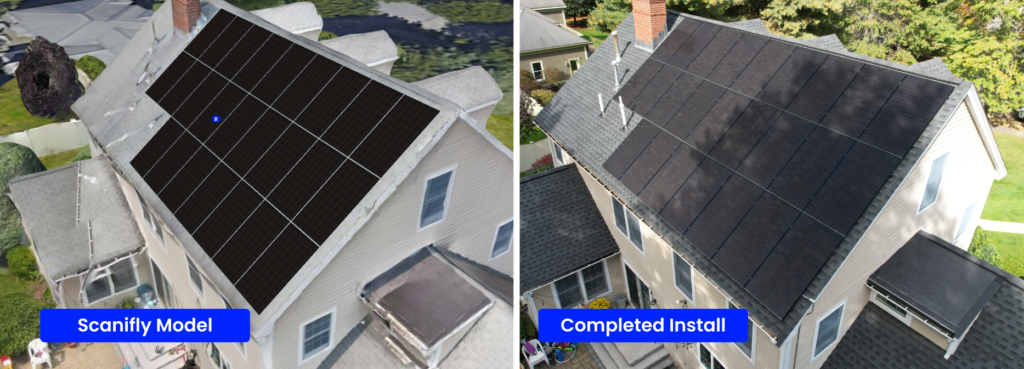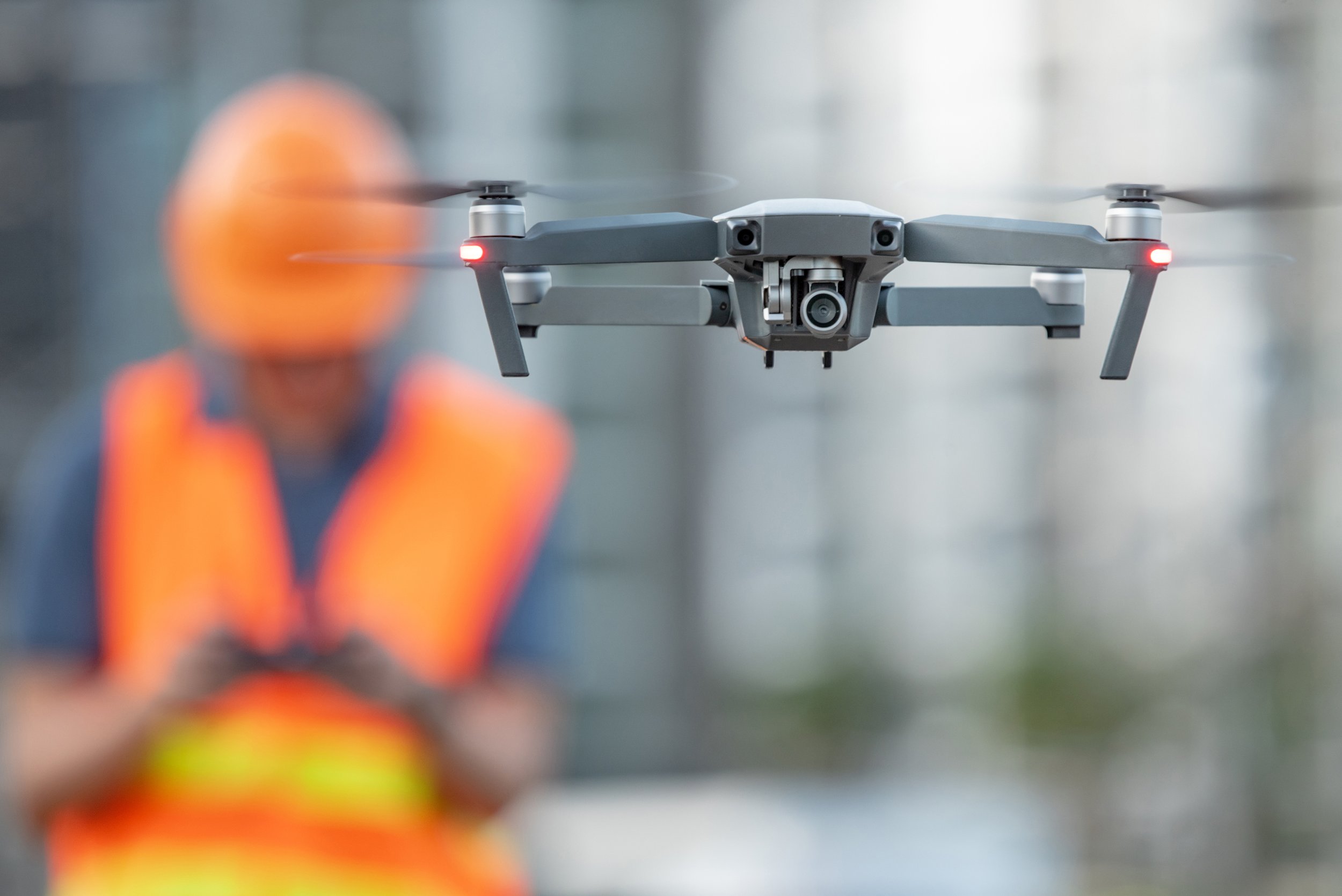There’s a common misconception that drones are only valuable for cool website videography. The reality is drones are valuable throughout the whole project process: surveys with drones are more accurate and those benefits continue all the way through install day.
Install Day Use Cases
Drones can help with every element of install day, ensuring you collect all the data necessary on an installation checklist.
Pre-install roof health check: Installation teams need to check for any preexisting roof damage and get a sign-off, if necessary. This can easily take over an hour if done manually. A drone turns this into a 15-minute task, quickly flying and examining the footage in real time.
Final design accuracy check: Using photogrammetry-derived measurements from geotagged drone data ensures that final designs and engineering documents are perfectly accurate, meaning you won’t run into change orders, revisions, or any other installation delay (or call-off).
Confirm work done: Use a drone to capture an image of the completed array. If you’re using Scanifly, you can cross-reference the 3D model site plan to verify that all details have been added exactly as planned. Field teams can refer to annotated images for any pertinent information from Surveyors and Designers, resulting in time savings and increased safety.
Company-wide Applications to Accelerate Growth

Overall project efficiency: Integrating multiple data sources like Google or Mapbox into a single design platform accelerates project timelines and cuts costs—particularly soft costs, including software stack consolidation.
Detect hotspots and set up for O&M: Thermal drones with infrared cameras and sensors allow Installers to detect hotspots and document system performance safely during the post-installation confirmation—especially on a new construction property that might not be fully electrified.
Laying the foundation for future use cases: Safety and project completion data can help with additional future upsells such as battery storage, EV charging, and improving the interplay between panels.
Marketing benefits: Installers can use drones to capture real-time imagery onsite. Most commonly, the installers can collect “as-built” or “hero” images for marketing or promotional use without an additional site visit.

Benefits for Solar Installers and Field Techs
Minimize roof time: Enhanced 3D modeling can create highly detailed site simulations, including property details, surrounding structures, and vegetation. This helps Installers can stay on the ground for most, if not all, job prep.
Easier, comprehensive data collection: Using Scanifly’s mobile app and checklists, Installers can annotate photos with solar-specific labels to add meaningful context for post-install audits. Further, they can organize all media into albums for quick and easy review of the completed project.
Career development: Learning how to use drones is a great way to upskill and cross-train, which opens up new opportunities and the potential for higher pay. Given how nearly one third (30.8%) of solar professionals report they aren’t sure what their next career step is, creating job mobility and optionality is a great thing for Contractors to offer employees.
Low barriers to entry but significant benefit: You can learn drones in a few hours (like the team did at Freedom Solar). And you only need one FAA-licensed pilot per crew, a task easily taken on by the Lead Installer. Installers can also use less expensive drones, like the Mavic Mini, for most install-specific use cases.
The Future of Technology Only Gets Brighter
Technology can improve the entire process, from sales to installation and O&M. But it’s still only just the beginning. With advanced automation features and automatic CAD exports, Designers create designs with square corners and perfectly placed panels. This leads to publishing stamped permit-ready plan sets within 48 hours.
Further, machine learning and AI are opening more opportunities such as auto-generating module layouts, identifying stringing patterns, and adjusting for either site-specific goals or AHJ rules. This further reduces the time needed to go from survey to accurate and engineer-stamped installation plans.
Finally, augmented reality, real-time analytics, and open source communities like AMICUS Solar are making it easier than ever to learn about solar, connect with potential collaborators, and showcase solar’s value to would-be customers.
So the message is clear: Get started with end-to-end technology now and reap benefits today… all the while setting yourself up for even more growth tomorrow.






